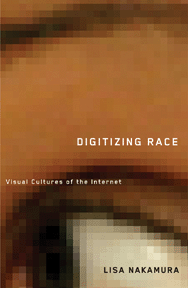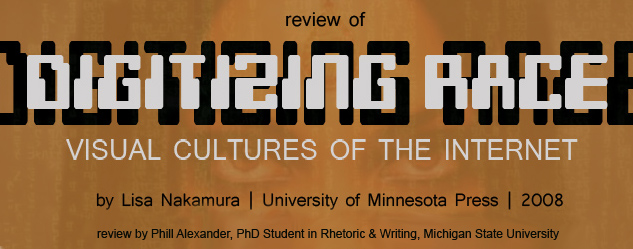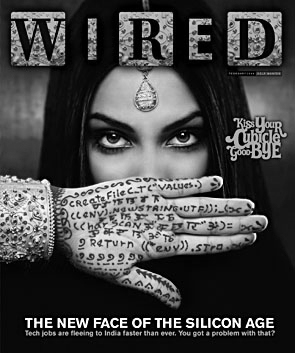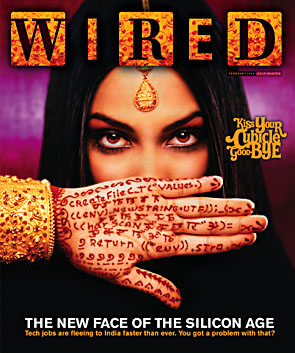

Introduction:
Digital Racial Formations
Chapter 1:
"Ramadan is Almoast Here"
Chapter 2:
Alllooksame
Chapter 3:
The Social Optics of Race
Chapter 4:
Avatars and Visual Culture
Chapter 5:
Measuring Race on the Internet
Epilogue:
Racio-Visual Logic
Conclusions on Digitizing Race
|
In my review I have attempted to illustrate the limitations of a standard bound, black-ink-on-white-paper book when the subjects are color and motion-rich visual material. It is my hope that in doing so I have illustrated how Nakamura’s ideas address movement and color even in their absence, as I think that is one of this book's major strengths. I hope that my visual critiques will be viewed by readers as an expression of what a webtext allows me to do while reviewing and not as any sort of attack on Nakamura’s work. More importantly, however, Nakamura opens a door that in all actuality should have been open already but was somehow obscured in digital media and visual rhetorical studies (other than in a few isolated works by scholars like Angela Haas, Carolyn Handa, Gail Hawisher and Cindy Selfe, and Anne Wysocki). The Internet and its many interactive visual-based communities (be those elements of online chat, simulations/visual MOOs like Second Life, Massively-Multi-player Online Role-Playing Games like World of Warcraft, or social networking sites like Facebook or MySpace) need to be looked at and considered in terms of race, gender, social class, and religion. In other words, we need to think, as scholars, about what our digital production and consumption says about our identities instead of falling prey to either the outmoded utopian model wherein the Internet is viewed as a structure that transcends race or the more pessimistic “just ignore race and it won’t be an issue” paradigm that seems to permeate scholarship in the new millennium. Perhaps the greatest pitfall in this sort of academic work, however, is the battle between the privilege given to alphabetic, paper-printed, bound text and the need for other forms of expression. It is difficult to express the importance of skin tone as a marker—correctly or incorrectly—of race in American culture that has creeped into online space if the online image—in all its vibrant color—is reduced to a mass-production black-and-white image. There are also simply situations where the visceral feel of something—the pathetic appeal—simply cannot be conveyed in text. An example of this occurs in chapter 3 of Nakamura’s book when she discusses the scene in The Matrix: Reloaded where Neo, played by Keanu Reeves, fights an army of replicated Agent Smiths within the Matrix. The scene can be described in a number of ways, but none of them carry the emotional impact, or the dynamic movement and careful use of camera techniques, digital editing, and so on, that simply viewing the video encompasses. While it is true that film studies in particular has thrived for years without the inclusion of video clips in essays and books, as visual rhetoricians we would be hugely remiss if we didn’t consider how the allowances of multimodality have changed the materials available for such writing. A tradition does exist, but cases are rarely made for that tradition as anything other than a necessity. Nakamura also touches briefly in places on the way that ownership of media is changing as users pick up pieces here and there and recombine them in new ways (such as the buddy icons she discussed at length in chapter 1). What I have done here, incorporating a piece of Matrix: Reloaded, which I didn’t create (and didn’t place online, and am not hosting as that would be a violation of copyright law), in many ways replicates that process. It will be critical in the future that we as scholars of digital media consider legal and ethical implications as well, that we pay close attention to how we remediate the use of figures in a paper when we use digital media in a digital work. There are a few things the book could do better. While Nakamura offers significant research and contextual theory and research, at times the material being used to support or frame her arguments obscures her research or interrupts the flow of her analysis and at times the review of literature is so robust and engaging that breaks to include an example or analysis are jarring. The nature of the interwoven review of literature and theory also makes it difficult to scan back over the text to locate a specific passage. The use of headings, or a clearer division between review of literature and the meat of Nakamura’s own research and critique would have no doubt been of profound use to the reader. The book also suffers from the limitations imposed by bound, black-on-white alphabetic text. Only a few small things—such as pre-graphic-Internet inspired signature (or .sig) images—that Nakamura discusses are black-and-white, and almost all of the examples she works with include motion. While she does a fantastic job of describing and explaining things in alphabetic text, there are places, such as her discussion of the Jennifer Lopez video “If You Had My Love, ”where even with carefully written thick description the reader will almost certainly need to move to a computer, as I did, and view the video to fully understand what Nakamura is critiquing. Likewise the included WIRED magazine cover from February of 2004 (p. 198) loses a great deal of impact when grayscaled:
The colors of skin tone, in particular, are highly relevant to many of Nakamura’s discussions, and an argument could be made that grayscaling the image above “whitens” the obviously non-white face. Of course, writing about a video or describing the missing color in a grayscaled graphic are limitations of the print publishing industry, not of Nakamura's argument. However, my own reading experience was greatly enhanced by hunting down as many of Nakamura’s examples as possible for viewing in their original medium. Digitizing Race is a valuable reflection on a key issue that we face as rhetoricians and teachers working in computers and writing. Race, and careful, critical consideration of difference, are both essential to a rich, complete understanding of digital media, but as Nakamura points out repeatedly in the book, race is often artificially removed from discussions and considerations of the Internet. More work needs to be done to insure, as Nakamura has, that race is foregrounded in future studies of digital media and the Internet lest we leave a gaping hole in our scholarship and our understanding.
|

